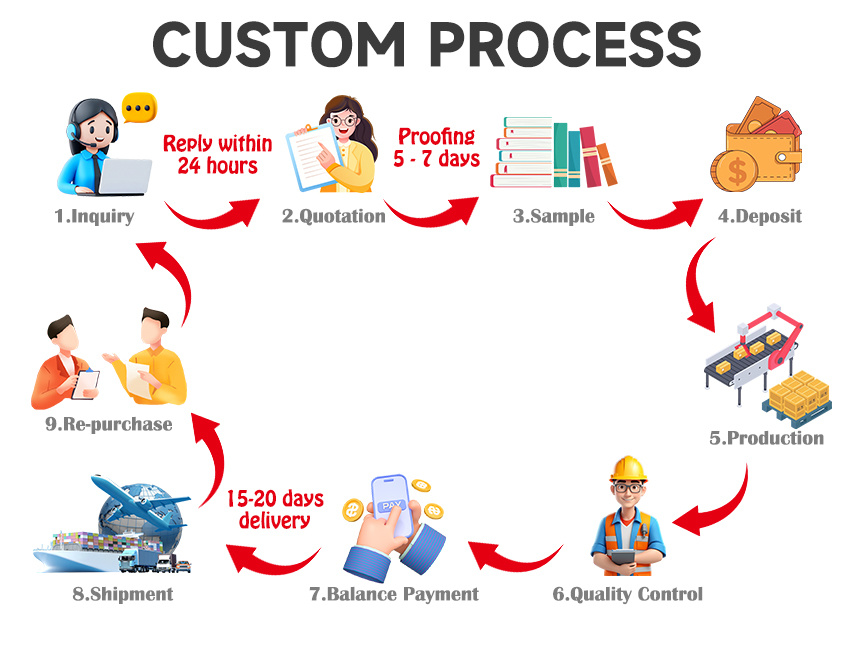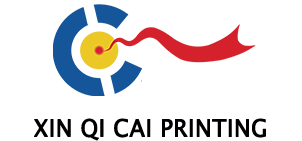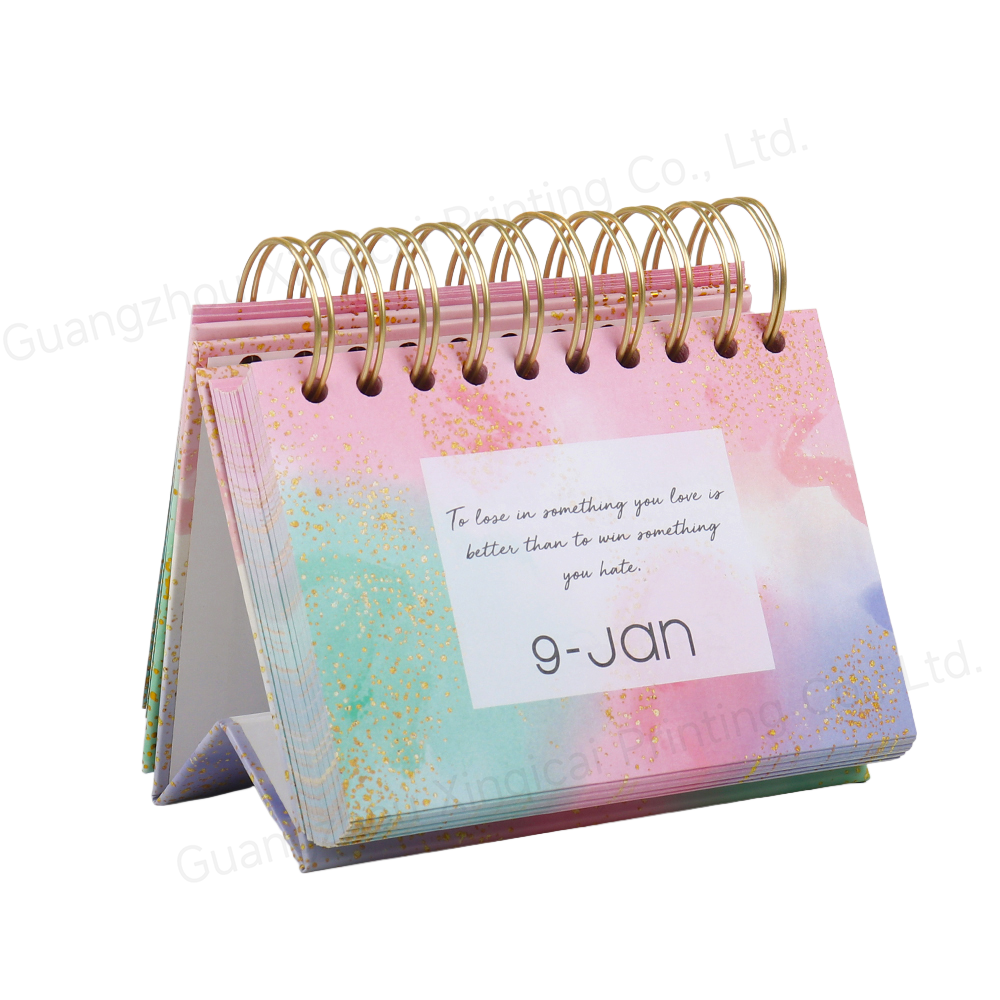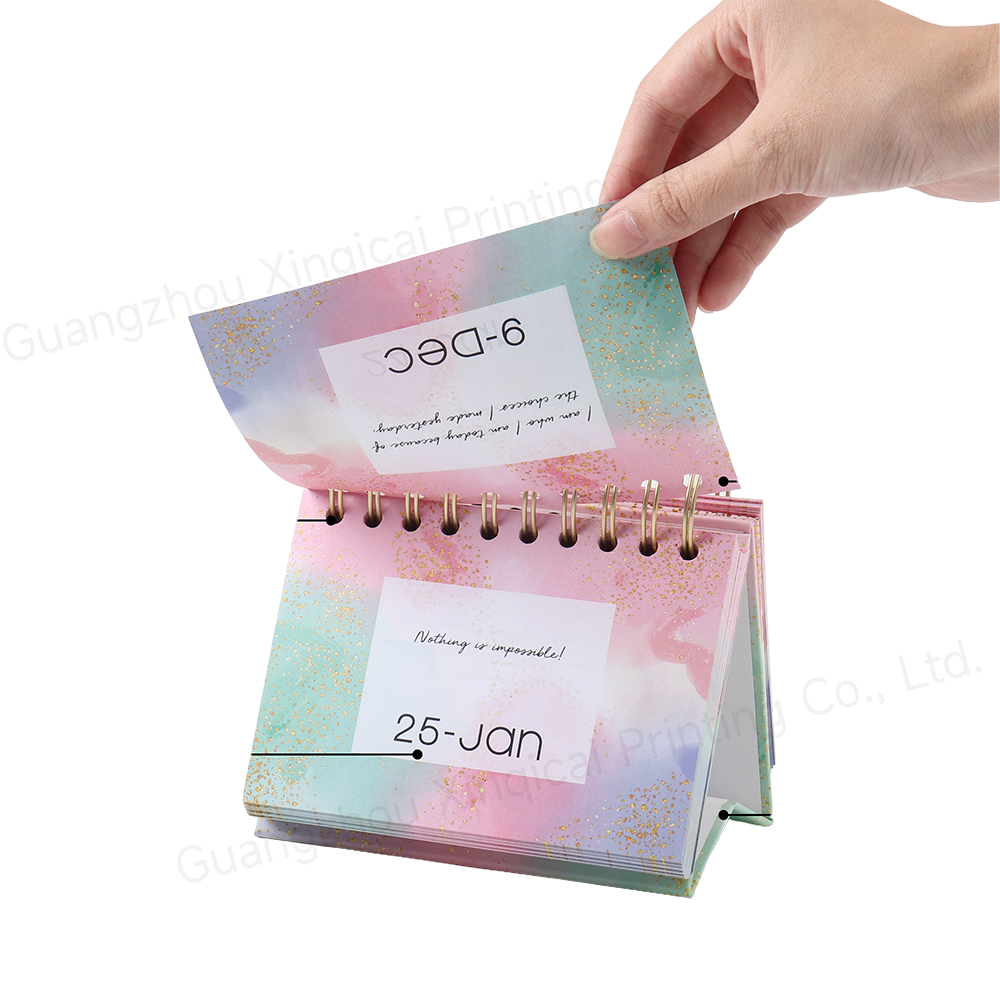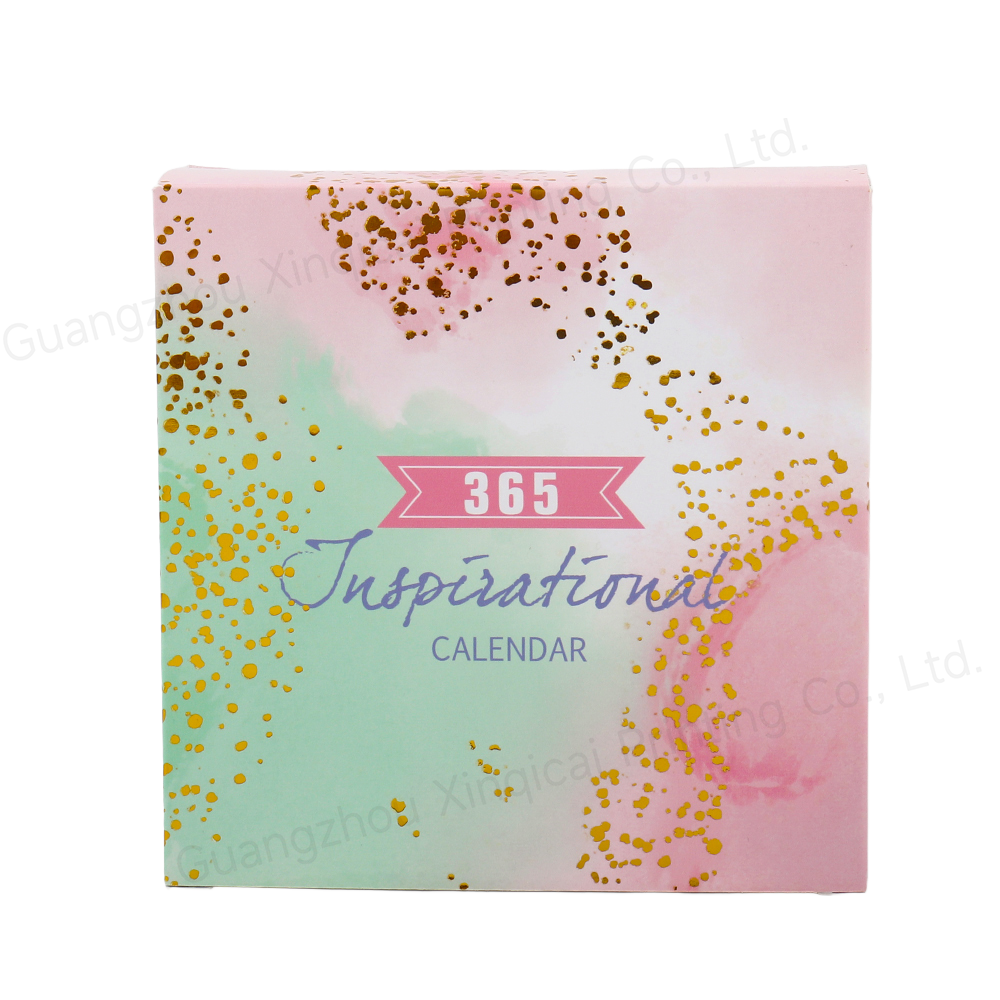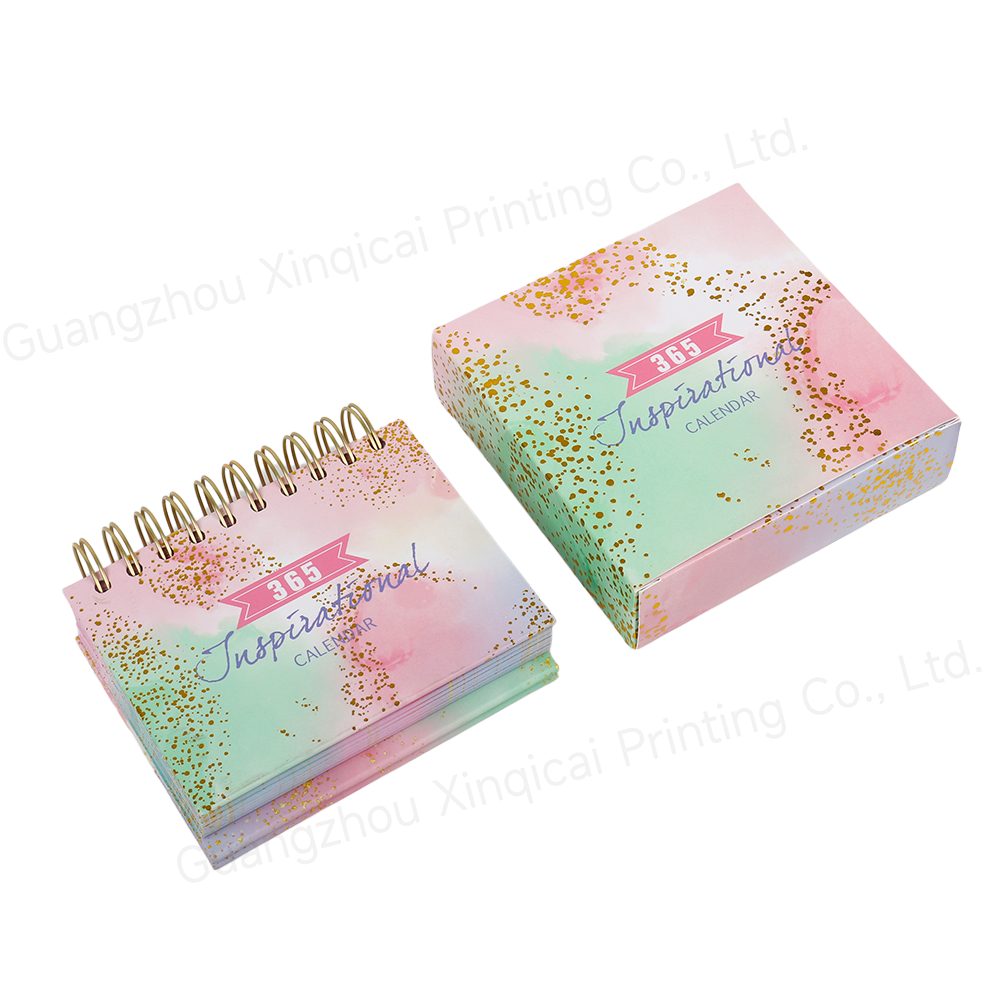Products Description
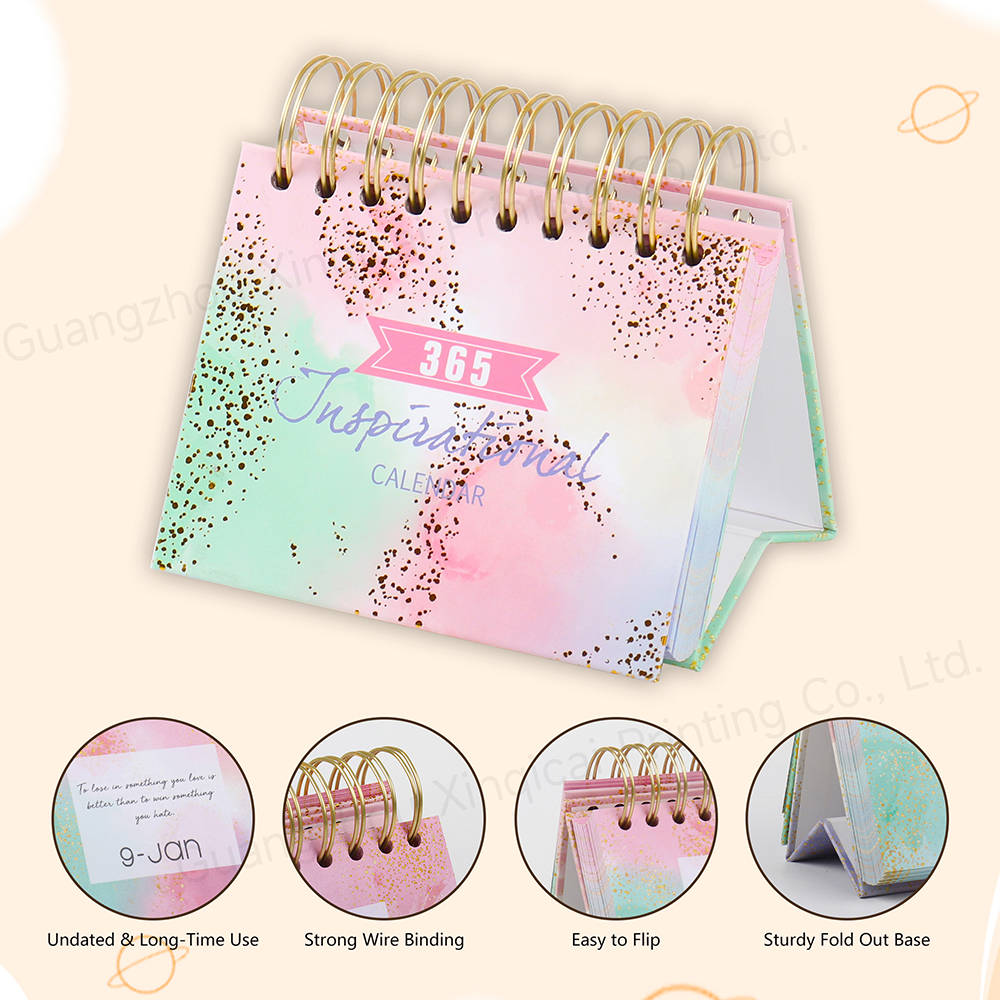
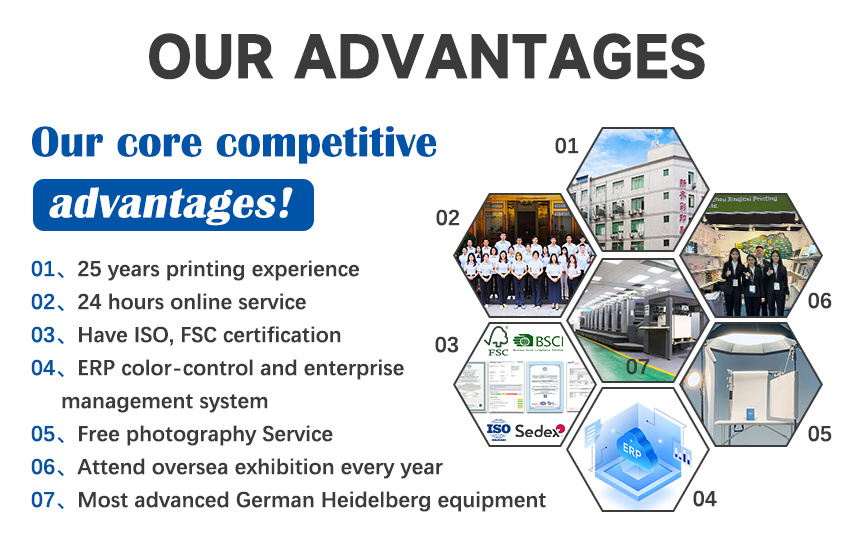
Detailed introduction: Customized calendar printing
Customized calendar printing is a printing service that combines practicality, ornamental and personalized needs. It is widely used in corporate publicity, holiday gifts, personal commemorations and other scenarios. The following is a detailed introduction from the aspects of customization type, core links, precautions, etc.:
I. Common types of customized calendars
According to the purpose, form and design style, customized calendars are mainly divided into the following categories:
Corporate promotion calendar: With the corporate brand as the core, it integrates logo, corporate culture, product information, etc., and is often used for customer gifts and business activities. It has both practical value and brand promotion functions.
Holiday commemorative calendar: Designed for festivals such as the Spring Festival, Mid-Autumn Festival, and Christmas, it incorporates festive elements (such as zodiac signs, fireworks, Christmas trees, etc.), and is suitable as a gift to convey blessings.
Personal/family commemorative calendar: Uses personalized content such as family photos, travel records, and moments of growth to become a warm carrier for recording life, which is common in family gatherings, birthday commemorations and other scenes.
Theme creative calendar: Designed around specific themes (such as animation, art, nature, science, etc.), it has a unique style and is suitable for collection or as a niche gift, such as illustrator joint calendars and museum cultural calendars.
Functional calendar: In addition to date display, it also has additional note area, to-do list bar, solar term knowledge, horoscope and other functions to meet the needs of office and study scenarios.
II. The core link of customized calendar
1. Specification and form design
Size: Common sizes include pocket type (such as 10×15cm, easy to carry), desktop calendar (such as 15×20cm, suitable for office desk), wall calendar (such as 42×57cm, suitable for wall hanging), large poster calendar (such as 80×120cm, suitable for decoration), etc. Special sizes can also be customized according to needs.
Number of pages and cycle: It can be designed as an annual calendar (12 pages, 1 page per month), a quarterly calendar (3 pages, 1 page per quarter), a weekly calendar (52 pages, 1 page per week), or add additional pages such as cover, back cover, brand page, etc.
Binding method:
Desk calendar: commonly used spiral binding (easy to turn pages), binder binding (replaceable inner pages), rivet binding (stable and durable).
Wall calendars: mostly use punching and stringing (punching holes on the top, with cotton rope or metal ring), saddle stitch binding (suitable for thin wall calendars).
Others: coil binding (suitable for small-sized portable calendars), glue binding (suitable for thick calendars in volumes, such as weekly calendars).
2. Material selection
Paper:
Inner pages: commonly used coated paper (100-157g, brightly printed, suitable for photos and illustrations), matte powder paper (128-200g, delicate texture, avoid reflection, suitable for content with more text), writing paper (80-120g, cost-effective, suitable for the note area of functional calendars).
Cover/base: needs to be thicker and more durable, thick coated paper (250-300g), cardboard (300-400g), special paper (such as kraft paper, artistic patterned paper, to enhance the texture) can be selected, and the base of the desk calendar can also be coated with cardboard (to increase load-bearing capacity).
Additional materials:
Desk calendar stand: You can choose wood (retro style), metal (simple and modern), acrylic (transparent texture) and other materials to enhance the overall grade.
Decorative elements: hot stamping/hot silver (for logo, date numbers, increase the sense of refinement), UV process (local convexity, enhance the touch), lamination (bright film/matte film, protect paper, waterproof and anti-fouling), stickers/embroidery (personalized decoration).
3. Design and content planning
Visual design:
Style positioning: Determine the style according to the purpose, such as corporate calendars tend to be simple business style (highlighting logo and products), children's calendars tend to be cartoon and lively style (bright colors, cute patterns), and commemorative calendars tend to be warm and realistic style (mainly photos).
Element layout: Reasonably allocate the proportions of date area, pattern area, and text area to ensure clear information (such as date numbers need to be eye-catching, important festivals and solar terms can be specially marked), and integrate brand elements (logo position needs to be prominent but not abrupt).
Content details:
Basic information: accurately mark the Gregorian calendar date, week, lunar calendar date, solar terms, statutory holidays (can be marked with special colors).
Personalized content: corporate calendars can add company profiles, product information, and event announcements; commemorative calendars can add photos and text notes (such as "2024.5.20 Family Travel"); theme calendars can incorporate theme-related knowledge (such as the small knowledge column of the popular science calendar).
4. Printing process
Color mode: CMYK four-color printing (suitable for most patterns and texts), if it involves special colors such as gold and silver, spot color printing can be used (the color is purer).
Surface treatment:
Laminating: divided into bright film (to enhance gloss) and matte film (anti-scratch and wear-resistant, soft texture), often used for covers and bases.
Hot stamping: The metal foil is hot stamped on the surface of the paper at high temperature, with gold, silver, laser and other effects, suitable for highlighting logos or key texts.
UV glazing: Apply UV ink to local areas (such as titles and patterns), and form a raised texture after curing with ultraviolet rays to enhance visual impact.
Embossing/debossing: The paper surface is pressed by molds to produce a three-dimensional texture, without ink, suitable for simple logos or patterns.
Special process: For children's calendars, rounded corner cutting can be used (to avoid scratches); for creative calendars, hollowing, special-shaped die-cutting (such as cutting into zodiac shapes, plant outlines) and other designs can be added.
5. Production and delivery
Proofing confirmation: Make samples before printing to check whether the size, color, text, and process effects meet the requirements. After confirmation, mass production can be carried out to avoid batch errors.
Minimum order quantity and construction period: Different printing factories have different minimum order quantities, usually 50-100 copies, and the larger the quantity, the lower the unit price; the construction period is generally 7-15 days (including design, proofing, printing, and binding), and expedited orders can be shortened to 3-5 days (extra fees are required).
Packaging and transportation: Choose the packaging method according to the calendar type. For example, desk calendars are often packaged in gift boxes (to enhance the gift feeling), and wall calendars can be packaged in plastic bags + cartons (moisture-proof and dust-proof); transportation is mainly by express delivery, and care should be taken to avoid extrusion and deformation.
III. Precautions for customizing calendars
Design material preparation: Provide high-definition pictures (resolution ≥ 300dpi, to avoid blur), vector format logos (such as AI, EPS format, to ensure clear printing), and the text content needs to be carefully proofread (to avoid date errors and typos).
Cost control: Material, process, size, and quantity will affect the cost. For example, the cost of special paper + hot stamping process is relatively high. If the budget is limited, ordinary coated paper + four-color printing can be selected to prioritize the clarity of core information.
Time planning: Holiday calendars (such as New Year desk calendars) need to be customized 1-2 months in advance to avoid delivery delays due to tight scheduling of printing factories during peak seasons (such as October-December).
Purpose matching: For example, corporate promotional calendars need to highlight the brand image, and the logo and product association should be strengthened in the design; family commemorative calendars are mainly emotional, and use more warm photos and handwritten text.
IV. Application scenarios of customized calendars
Enterprises: As customer appreciation gifts and employee benefits, convey brand concepts and enhance brand exposure.
Merchants: As gifts for consumption (such as shopping malls and restaurants), attract customers to consume and enhance customer stickiness.
Individuals: Make family commemorative calendars to record children's growth and travel, as birthday gifts or family collections.
Institutions: Schools and clubs can customize theme calendars (such as school calendars and club activity calendars) to facilitate members to plan their time.
The core of customized calendars is to combine practicality with personalization, convey emotions or brand values through detailed design, and choose the right printing solution, so that the calendar can not only be a time tool, but also a carrier with both functionality and commemorative significance.
